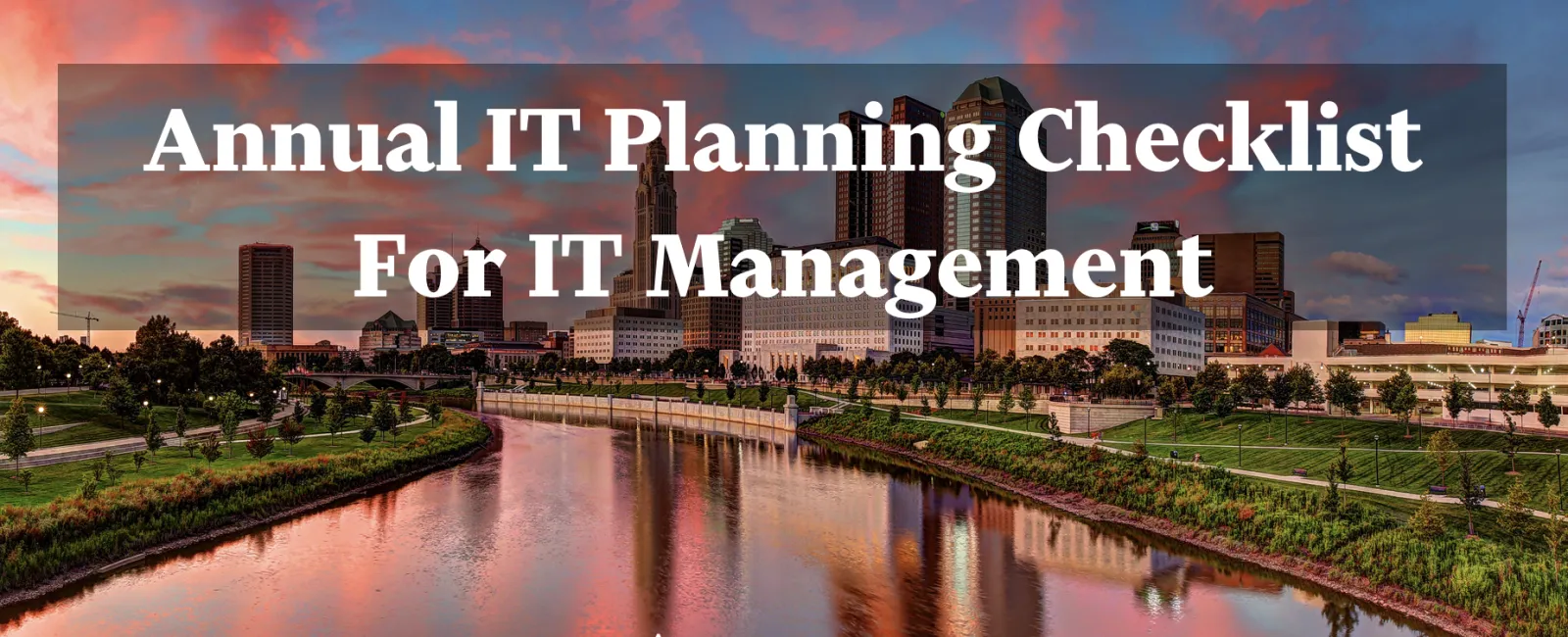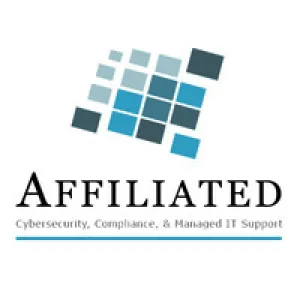September 30, 2025
The IT "Director's" role in 2026 is more
mission-critical than ever. No longer confined to infrastructure and support,
IT leaders are expected to deliver security, scalability, compliance, and
innovation—while aligning closely with business goals.
The pace of change continues to accelerate.
Ransomware threats are more advanced. AI adoption is rising, bringing both
promise and regulatory pressure. Remote and hybrid work models demand resilient
cloud-first architecture. Meanwhile, boards and executive teams expect IT to
lead with precision, foresight, and transparency.
This annual planning checklist is your blueprint
for operational excellence. It's designed to help you assess priorities,
allocate resources, and drive performance across the key areas of your
responsibility: cybersecurity readiness, infrastructure and cloud management,
policy enforcement, compliance alignment, vendor oversight, and team
development.
It's a working tool—meant to be referenced,
updated, and shared. Use it to guide quarterly reviews, executive updates, or
internal audits. Assign ownership, track status, and use it to anchor your
planning conversations across departments.
In a year defined by risk, automation, and
transformation, this checklist empowers you to lead with discipline and deliver
results that matter.
Strategic &
Operational Planning
[ ] Review prior year's IT project delivery performance,
incidents, and lessons learned
[ ] Align departmental goals with executive business priorities
[ ] Finalize IT roadmap with timelines, resource plans, and budget alignment
[ ] Update project tracking and prioritization dashboards for leadership
visibility
[ ] Identify infrastructure and application areas that need scaling or
modernization
Cybersecurity Operations
& Risk Management
[ ] Schedule and execute the annual risk assessment across all
business units
[ ] Review and update the Incident Response Plan (IRP); conduct a tabletop
exercise
[ ] Validate that endpoint protection, MDR, SIEM, and vulnerability scanning
are working and current
[ ] Audit user account provisioning, MFA enforcement, and administrative
privilege management
[ ] Run internal penetration test or coordinate external scan (e.g.,
Cyberwatch-type tool)
[ ] Validate proper patch management cadence across servers, workstations, and
SaaS apps
[ ] Check data encryption standards across endpoints, backups, and
data-in-transit workflows
[ ] Confirm cyber insurance claim procedures are documented and shared
internally
Policy, Compliance &
Audit Readiness
[ ] Review and update all IT policies: Acceptable Use, Remote
Access, AI Usage, etc.
[ ] Ensure evidence is documented for control validation (e.g., MFA enforcement
logs)
[ ] Track compliance readiness for frameworks like HIPAA, SOC 2, CMMC, or
internal audits
[ ] Run quarterly reports validating system configurations, access control, and
retention policies
[ ] Collaborate with HR and legal to ensure acceptable use and BYOD policies
are distributed and signed
Infrastructure &
Cloud Systems
[ ] Audit hardware lifecycle: refresh schedules, extended
warranties, spare inventory
[ ] Verify backup strategy is running, tested, and includes offline and cloud
components
[ ] Monitor cloud utilization vs. forecast; right-size services where possible
[ ] Confirm DR testing has occurred or is scheduled for all critical systems
[ ] Update asset management database (CMDB or equivalent) with new or retired
assets
[ ] Ensure firewall firmware, DNS filtering, and segmentation are current and
tested
Budgeting & Cost
Controls
[ ] Compare current vs. prior year spend on all major categories
(SaaS, cloud, labor, hardware)
[ ] Flag renewal timelines for major IT contracts and licenses (firewalls,
Microsoft, backup, etc.)
[ ] Identify underutilized subscriptions and consolidate or deprovision as
needed
[ ] Prepare cost-justified proposals for needed upgrades or security
enhancements
[ ] Track IT spend per department where possible to support chargeback/showback
models
Team Development &
Accountability
[ ] Set quarterly and annual goals for all IT team members
[ ] Conduct skill assessments and assign appropriate training or certifications
[ ] Review on-call coverage, documentation handoffs, and process gaps
[ ] Identify burnout risks or resourcing gaps—plan to address with MSPs,
contractors, or hires
[ ] Document succession plans for key systems and roles
End-User Support &
Training
[ ] Review help desk metrics: ticket volume, resolution time,
recurring issues
[ ] Update knowledge base articles and internal SOPs
[ ] Ensure all staff are enrolled in mandatory cybersecurity training
[ ] Deploy regular simulated phishing campaigns and report metrics to
leadership
[ ] Survey user satisfaction with IT and identify opportunities to improve
experience
Digital Projects &
Innovation
[ ] Track status of digital transformation efforts (CRM, ERP, BI,
AI tools)
[ ] Identify manual processes that could benefit from workflow automation
[ ] Meet quarterly with business stakeholders to gather feedback and assess new
requests
[ ] Evaluate emerging technologies that support business continuity or
efficiency
[ ] Pilot innovations (e.g., AI copilots, RPA, low-code platforms) with
documented KPIs
Vendor & Contract
Oversight
[ ] Review performance of current MSPs, MSSPs, and critical IT
vendors
[ ] Update vendor risk assessments and cybersecurity posture records
[ ] Validate SLAs are met and renewal timelines are proactively managed
[ ] Coordinate annual vendor reviews and pricing renegotiations if needed
Documentation &
Systems Hygiene
[ ] Confirm all documentation (IRP, network diagrams, vendor
contacts, configs) is current
[ ] Archive outdated systems documentation and confirm version control is
enforced
[ ] Verify all logs (SIEM, firewall, endpoint, etc.) are stored, rotated, and
searchable
[ ] Tag all critical services with documented recovery time objectives
(RTO/RPO)
Click here or call us at 614-889-6555 to arrange your complimentary Consult to learn more!




